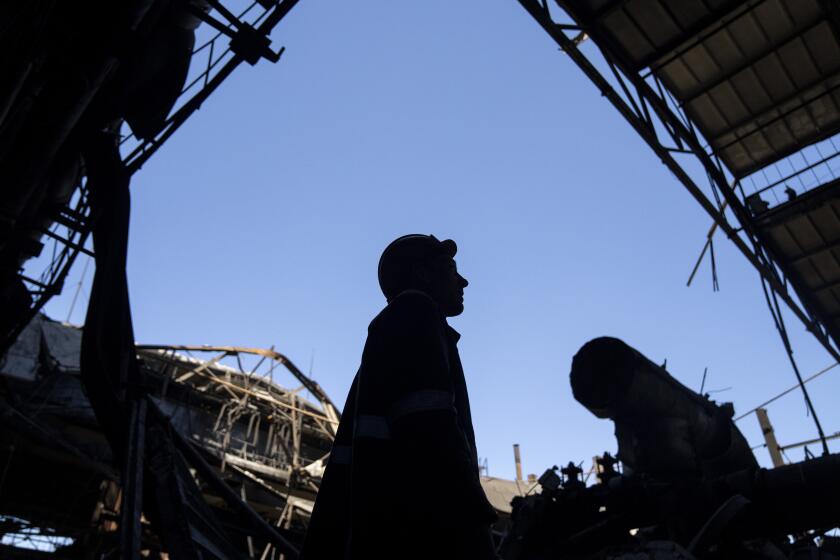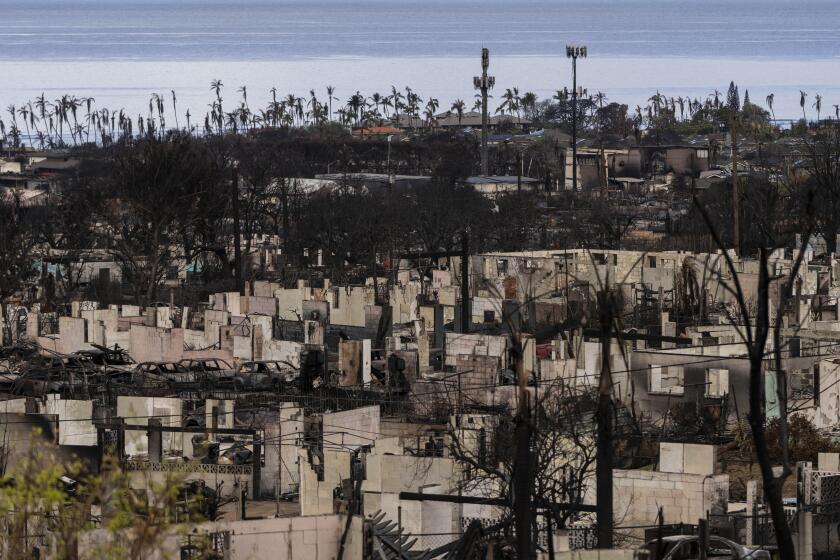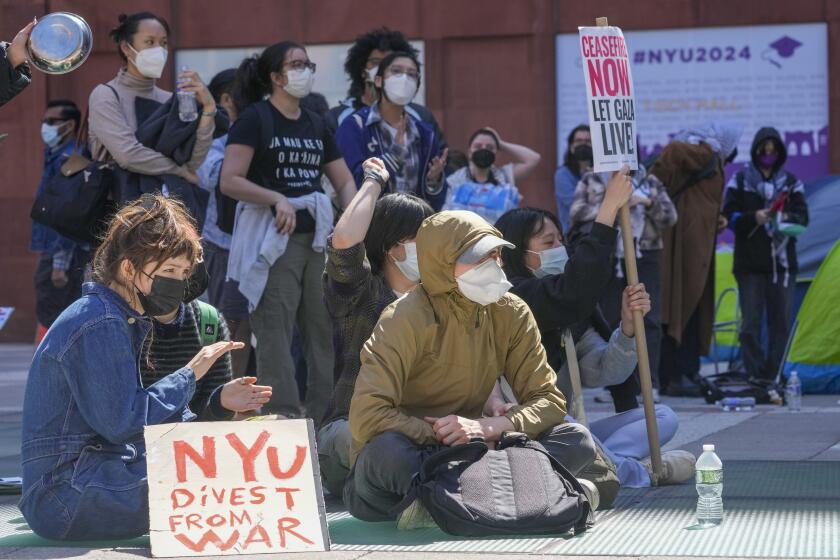China Holds Huge Underground A-Test : Nuclear blast: The 1-megaton yield is far larger than a 1974 treaty allows for U.S. and Russian tests.
China carried out a huge underground nuclear test Thursday, its first in nearly two years, exploding a device many times larger than either the United States or Russia would be permitted to detonate under existing arms control treaties, the Bush Administration said.
The explosion was carried out at the Lop Nur nuclear test grounds in the desert wastelands of China’s remote northwestern Xinjiang region. It had a force of about 1 megaton, or 1,000 kilotons, equivalent to 1 million tons of TNT, larger than any previous Chinese underground test, U.S. officials said.
The test demonstrated China’s determination to continue developing its nuclear capabilities, even at a time when momentum is building for a ban on nuclear testing. China became a nuclear power in 1964.
“It’s going to send significant shock waves around the region,” Ronald N. Montaperto, a specialist on Chinese defense at the Institute for National Strategic Studies, said Thursday. “They aren’t going to like this in India at all. The Japanese are not going to like it, or the Russians. It can’t help but have a negative effect on China’s image in the region.”
U.S. officials acknowledged that it might also have an impact on China’s relations with the United States. President Bush is to decide within two weeks whether to call upon Congress to renew China’s trade privileges in this country.
“It’s not politically helpful, that’s for sure,” one senior Administration official said. “It shows (China’s) continuing insensitivity to American opinion, at a sensitive time.”
Under the 1974 Threshold Test Ban Treaty, the United States and the Soviet Union agreed to limit their underground tests to no more than 150 kilotons. China has not signed the treaty, but the United States on Thursday called upon China to abide by its limits.
“We regret that the Chinese have conducted this test and that they are not demonstrating the same restraint as that shown by Russia, ourselves or the other nuclear weapons states,” State Department spokesman Richard Boucher said.
China is believed to have carried out 37 nuclear tests. Before Thursday, its most recent were two in May and August, 1990. The United States has tested nuclear weapons more than 900 times, and the Soviet Union carried out more than 700 tests.
Although the new Chinese explosion was larger than any that has been conducted underground for over a decade, it was much less powerful than earlier tests in the atmosphere. The United States conducted a 15-megaton atmospheric test in 1954, and the Soviet Union exploded a 58-megaton bomb in 1961. China has tested weapons as large as 4 megatons in the atmosphere.
The United States has refused to stop its own underground nuclear testing program, saying it needs to test for safety purposes. Some U.S. arms control specialists said Thursday they were surprised that the Administration criticized the Chinese when it has itself refused to go along with a test ban.
“It’s a little bit of chutzpah for the United States to say the other guy should please show restraint,” said Jack Mendelsohn, deputy director of the Arms Control Assn. “We have the luxury of having carried out the large tests already. And we’ve been decreasing the size of the weapons as we increase the accuracy of the delivery system.”
Chong-pin Lin, a specialist on China’s nuclear program at the American Enterprise Institute, said the new test “illustrates China’s independent foreign policy. . . . It shows that China feels confident in its diplomatic achievements” since the 1989 crackdown on the pro-democracy movement. “And in the view of Chinese leaders, they do a lot to appease Washington, yet Washington is never happy.”
More to Read
Start your day right
Sign up for Essential California for news, features and recommendations from the L.A. Times and beyond in your inbox six days a week.
You may occasionally receive promotional content from the Los Angeles Times.






